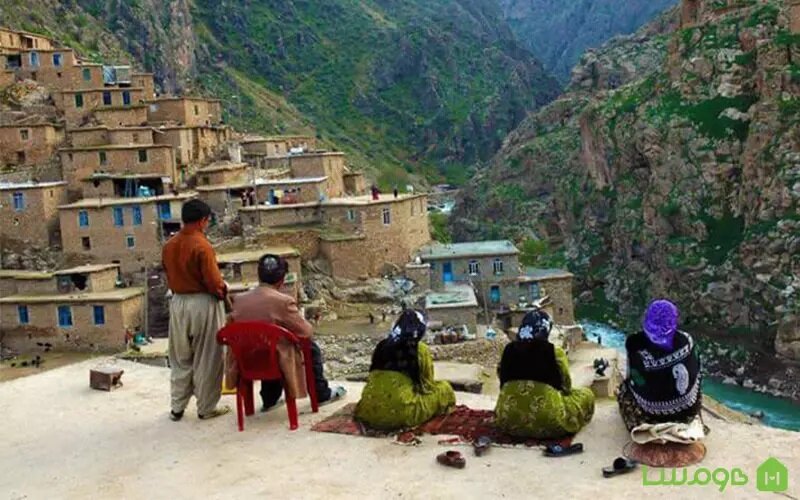TEHRAN – The picturesque village of Hajij, nestled in the UNESCO Uramanat Cultural Landscape in western Iran, is on its way to being declared a UNESCO World Heritage Site.
Local authorities are currently working in close cooperation with the Ministry of Tourism to prepare a comprehensive dossier on the village, its cultural heritage, history and tourist attractiveness, to be submitted to the United Nations cultural body, ISNA reported on Tuesday.
“The possible inclusion on the UNESCO list would be a significant milestone for the village and its surroundings,” said Dariush Farmani, head of tourism in Kermanshah province.
Farmani highlighted the ongoing efforts during a recent meeting dedicated to the project. “The registration of Hajij as a global village represents a unique opportunity for regional development,” Farmani explained.
Hajij village in Paveh County is known for its historic terraced house architecture. Stone and mud-brick houses are artfully stacked along steep, semi-circular streets, overlooking a deep valley and flowing river.
Such an architectural style is reminiscent of the famous village of Masuleh in northern Iran. The village layout is not only more visually appealing but also promotes a close-knit community, with the roofs of the lower houses serving as pathways and courtyards for those above.
A UNESCO World Heritage Site, Uramanat is an exceptional testimony to the cultural traditions of the Hawrami people, a Kurdish tribe that has lived in the Zagros Mountains for thousands of years.Elsewhere in his remarks, Farmani noted that while the application process is well underway, certain challenges remain. “We have one year to resolve all (existing) issues and finalise the application for submission to UNESCO,” he said, adding that these hurdles involve multiple government agencies and require coordinated efforts.
Due to its unique cultural and natural characteristics, Hajij is a strong contender for World Heritage status. The village’s deep connection with the surrounding landscape is reflected in its name, which means “a deep and green valley” in Kurdish. The village is located in a cold mountainous region and its south-facing houses with thick walls and small windows are designed to make the most of sunlight and withstand harsh winters.
In addition to its architectural and natural beauty, Hajij is a centre of cultural heritage and boasts rich traditions in handicrafts and local cuisine. However, the village is already a popular tourist destination in Kordestan Province and UNESCO recognition would further enhance its tourist attractiveness and provide new economic opportunities for local residents.
Archaeological finds in the Hawraman/Uramanat region, including artifacts dating back some 40,000 years, caves, rock shelters, ancient trails and inscriptions, provide evidence of continuous human habitation from the Paleolithic period to the present day. Other historical elements such as cemeteries, mounds, castles and settlements also underscore the persistence of the semi-nomadic lifestyle and agricultural practices that have characterized the region’s inhabitants for centuries.
Uramanat is an exceptional testament to the cultural traditions of the Hawrami people, a Kurdish tribe who have lived in the Zagros Mountains for thousands of years. This rich cultural heritage is exemplified by traditional practices such as transhumance, the seasonal migration between fixed summer and winter pastures known as havars, and terraced farming on steep slopes. The region also exhibits sophisticated soil and water management techniques, as well as traditional knowledge essential for the planning and construction of steep terraced villages.
AM

